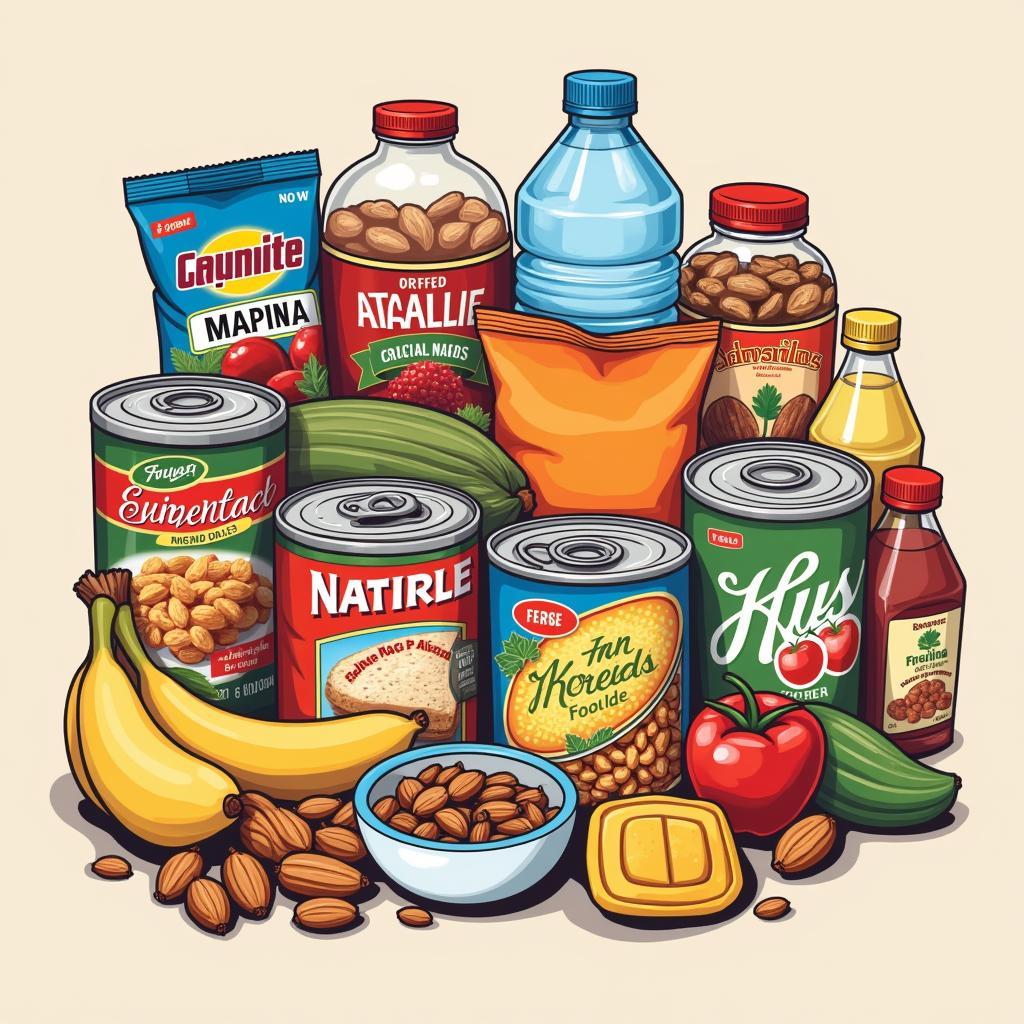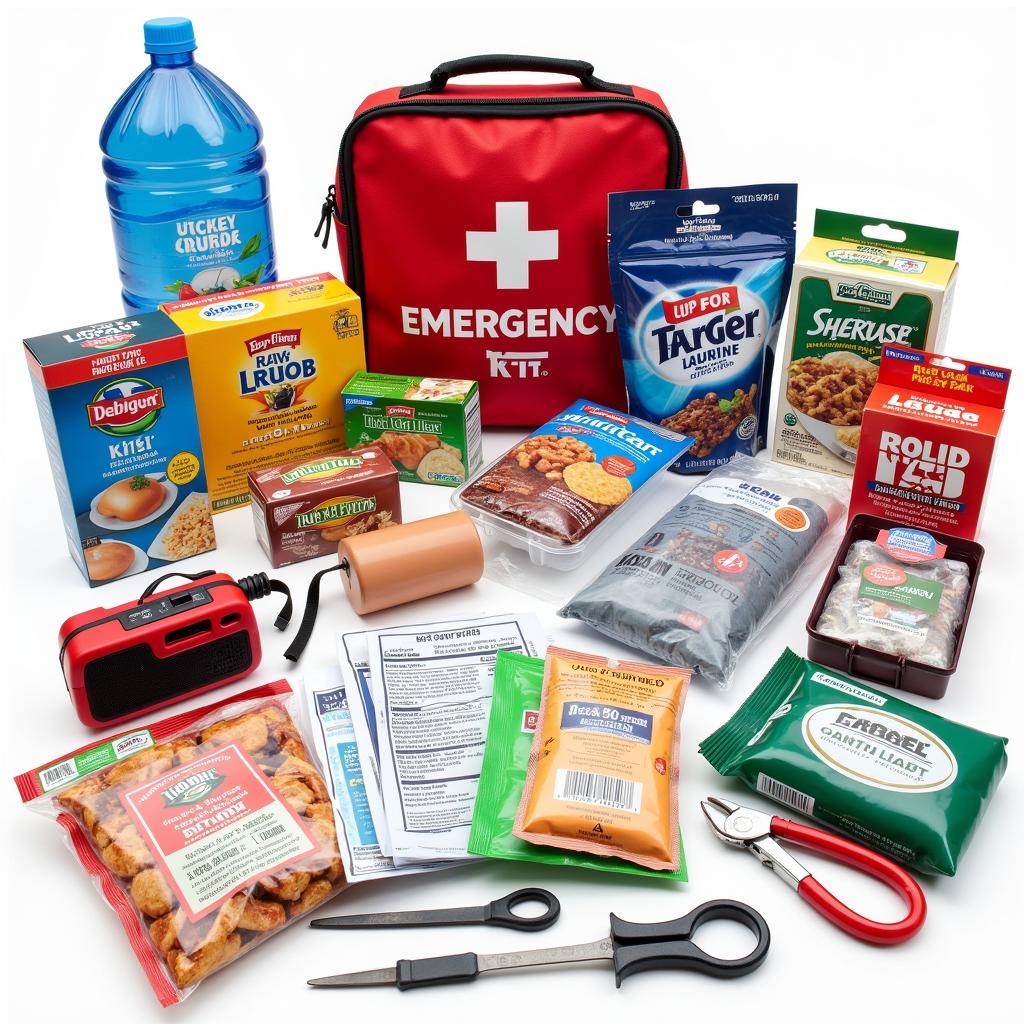Emergency food kits. They’re not just for doomsday preppers anymore. Whether it’s a natural disaster, a power outage, or even a sudden job loss, having a well-stocked emergency food kit can provide peace of mind and essential sustenance during challenging times. Building one doesn’t have to be overwhelming. Let’s explore the essentials of creating a reliable and nutritious emergency food supply.
Why Emergency Food Kits Are Essential
Imagine a scenario: a severe storm knocks out power for days, leaving grocery stores closed and shelves empty. Or perhaps a sudden layoff disrupts your financial stability. In such situations, having an emergency food kit becomes less of a luxury and more of a necessity. These kits are designed to bridge the gap between your regular food supply and unexpected disruptions, ensuring you and your family have access to essential nutrients when you need them most. They provide a sense of security, reduce stress, and empower you to face unpredictable circumstances with confidence.
Choosing the Right Foods for Your Kit
Stocking your emergency food kit isn’t just about grabbing any non-perishable items. It’s about selecting foods that are nutritious, shelf-stable, and easy to prepare, even without power or conventional cooking methods. Consider incorporating items like canned goods (fruits, vegetables, proteins), dried foods (pasta, rice, beans), and ready-to-eat meals (MREs) that require minimal preparation. Don’t forget about essential condiments like salt, pepper, and spices to make your meals more palatable.
 Essential Food Items for Your Emergency Kit
Essential Food Items for Your Emergency Kit
Think beyond the immediate needs and consider dietary restrictions, allergies, and personal preferences. If you have family members with specific dietary needs, ensure your kit caters to those requirements. Include comfort foods and familiar favorites to boost morale during stressful times.
Water: The Most Crucial Element
While food is vital, water is even more critical for survival. Include enough potable water in your emergency food kits to sustain each person for at least three days. A general guideline is to store one gallon of water per person per day. Consider using bottled water or storing tap water in clean, sanitized containers. Don’t forget about water purification tablets or a filter as a backup option for extending your water supply in case of prolonged emergencies.
How Long Should Emergency Food Kits Last?
The longevity of your emergency food kit depends on the types of food you choose and how well you store them. Canned goods typically have a shelf life of several years, while dried foods can last even longer if stored properly in airtight containers. Regularly inspect your kit and rotate the food items to ensure they remain within their expiration dates.
Planning for Different Scenarios
Emergency preparedness isn’t a one-size-fits-all approach. Consider different scenarios that might necessitate the use of your emergency food kit. A short-term power outage requires different supplies than a prolonged natural disaster. Customize your kit to meet the specific needs of your region and the potential emergencies you might face.
“Think beyond the basics,” advises Sarah Johnson, a certified emergency preparedness consultant. “Consider specialized items like infant formula, pet food, or medications for specific medical conditions.”
Beyond the Basics: Additional Emergency Supplies
While food and water are paramount, your emergency kit should also include other essential supplies. A first-aid kit, a hand-crank radio, flashlights, extra batteries, and sanitation supplies are just a few examples. Think about the items you rely on daily and include those in your kit to maintain a sense of normalcy during an emergency.
 A Well-Rounded Emergency Kit for All Situations
A Well-Rounded Emergency Kit for All Situations
“Building an emergency kit is an investment in your peace of mind,” says David Miller, a disaster relief expert. “It’s not just about surviving, it’s about maintaining a sense of comfort and control during uncertain times.”
In conclusion, building an emergency food kit is a crucial step in preparing for the unexpected. By carefully selecting nutritious and shelf-stable foods, prioritizing water storage, and including essential non-food items, you can create a reliable safety net for yourself and your loved ones. Don’t wait for an emergency to strike; take proactive steps today to ensure your preparedness. Emergency food kits aren’t just about survival; they’re about resilience.
FAQ:
- How much water should I store in my emergency food kit? (One gallon per person per day for at least three days)
- What types of food are best for long-term storage? (Canned goods, dried foods, MREs)
- How often should I rotate the food in my emergency kit? (Regularly check expiration dates and rotate annually)
- What other supplies should I include besides food and water? (First-aid kit, radio, flashlight, batteries, sanitation supplies)
- How can I customize my emergency food kit for specific dietary needs? (Include appropriate substitutes and specialized items based on individual requirements.)
- What are some good sources of information for building an emergency kit? (Ready.gov, Red Cross, FEMA)
- How can I store my emergency food kit safely and effectively? (Cool, dry, and dark location, away from direct sunlight and extreme temperatures.)
For support, contact us at Phone Number: 02437655121, Email: [email protected] Or visit us at: 3PGH+8R9, ĐT70A, thôn Trung, Bắc Từ Liêm, Hà Nội, Việt Nam. We have a 24/7 customer support team.